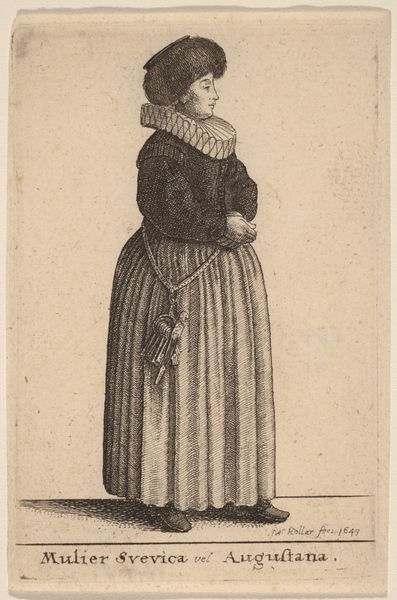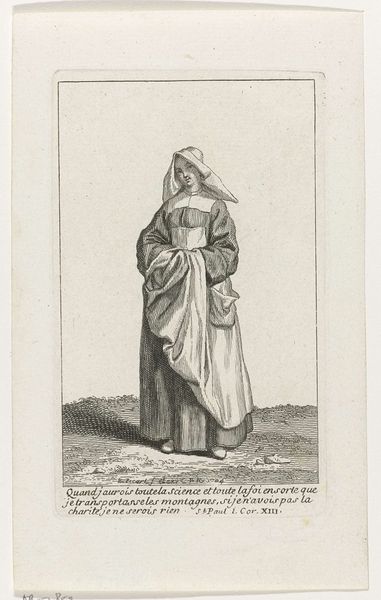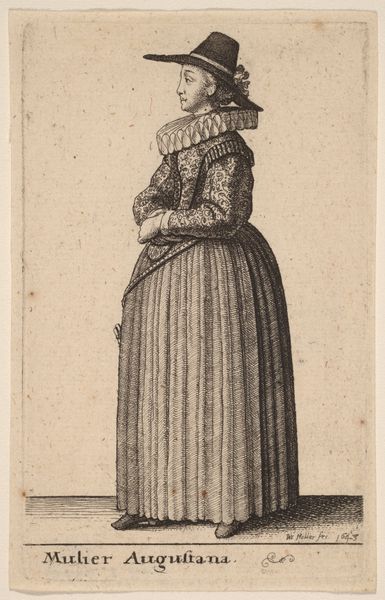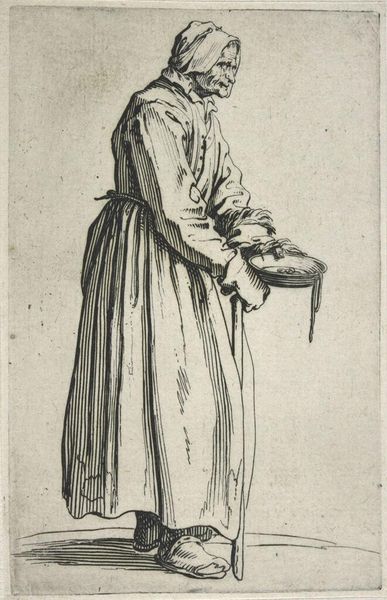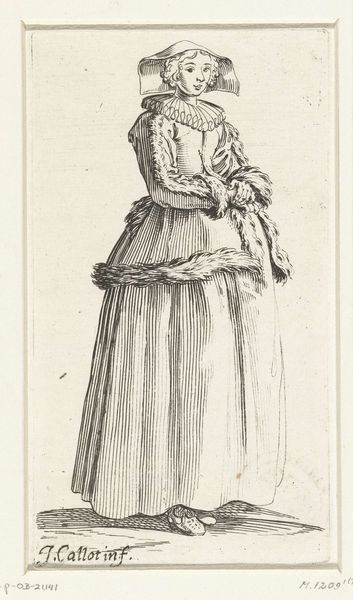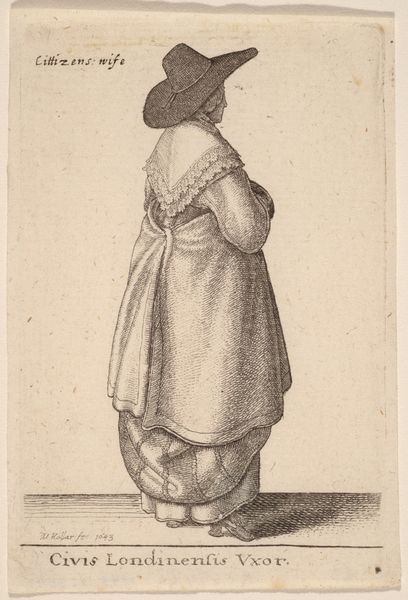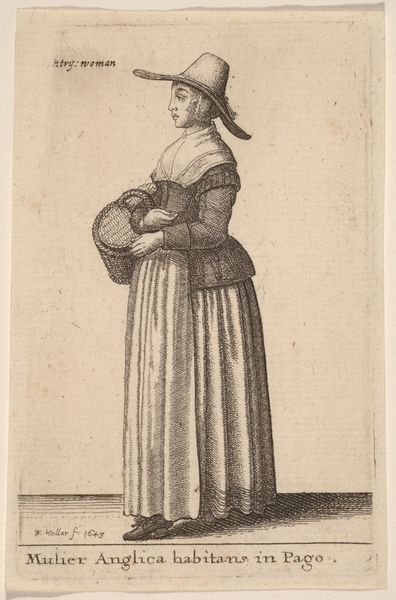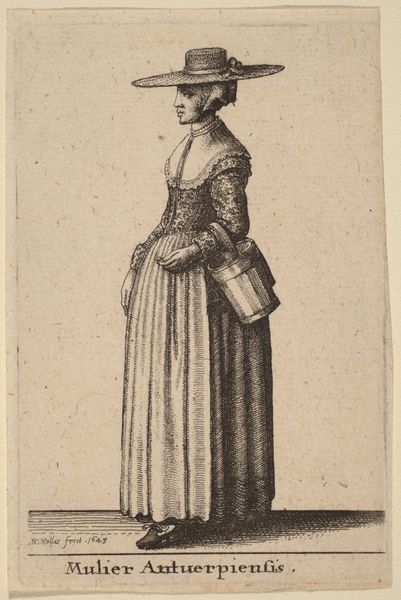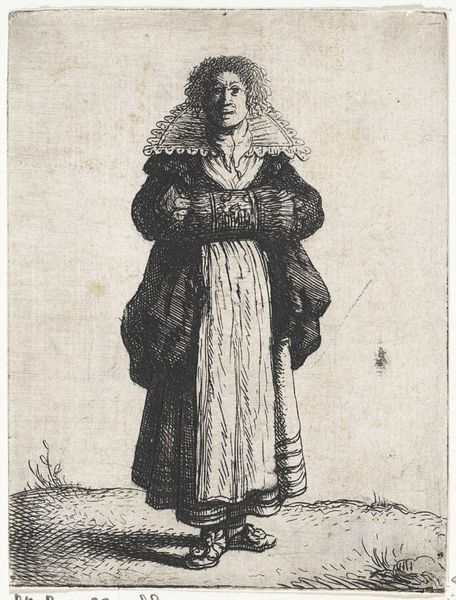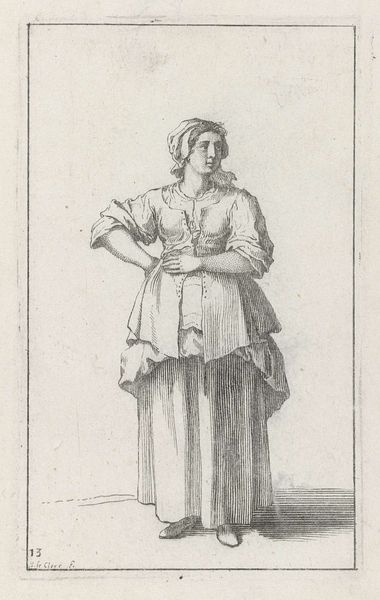
print, engraving
#
portrait
#
baroque
# print
#
old engraving style
#
figuration
#
genre-painting
#
engraving
Dimensions: height 119 mm, width 71 mm
Copyright: Rijks Museum: Open Domain
Curator: Welcome. We are standing before "Amsterdams Viswijf," or "Amsterdam Fishwife," a 1728 engraving by Bernard Picart. It is now held in the collection of the Rijksmuseum. Editor: It's immediately striking, this woman's formidable presence conveyed purely through line and hatching. Her garb suggests a somber formality, a life etched with toil. Curator: Picart was a master engraver and draftsman. This work exemplifies his keen observations of everyday life in the Dutch Republic during the early 18th century, part of a larger trend of representing the common person. Fishwives, in particular, occupied a specific economic and social space. Editor: Notice the density of the engraved lines which build form and volume. The almost obsessive detailing of her clothing juxtaposes beautifully with the plain backdrop, thrusting the figure into the foreground. Her headdress and draped fabric held with care offer a softer counterpoint to the angularity of the etched lines of the background. Curator: Absolutely. The engraving allowed for dissemination across a wide audience. Prints such as this informed social perceptions, perhaps playing into the evolving urban identity of Amsterdam and the labor dynamics present at the time. Think about how printed images could be used to shape attitudes. Editor: One has to admire the precision; such control over the burin is commendable, particularly in the modulation of light and shade. There's an almost tangible weight to her shawl and layered skirts. It draws you in, invites you to touch. Curator: Consider too how such images legitimized the subject—granting recognition and arguably respect, or even imposing limitations on representation. Fishwives had a vital role but, I suspect, did not have the means to represent themselves on their own. This makes Picart's position, and the consumption of this artwork, an interesting historical marker. Editor: It leaves me pondering how simple elements such as line quality and compositional choices transform into something far beyond pure technical skill; the soul of the subject. Curator: Indeed. This single engraving invites us to think about the interplay of representation, social order, and the lives of ordinary women in 18th century Amsterdam. Editor: A beautifully constructed representation, a visual essay on texture and light that still resonates after all these centuries.
Comments
No comments
Be the first to comment and join the conversation on the ultimate creative platform.
